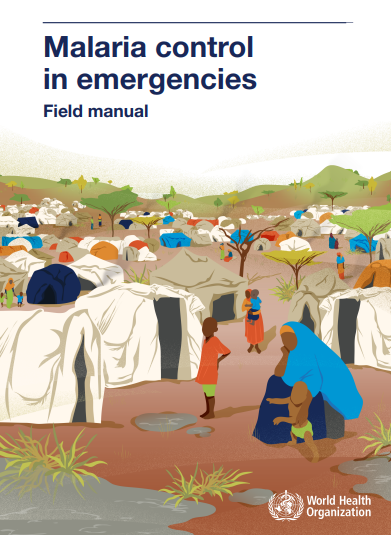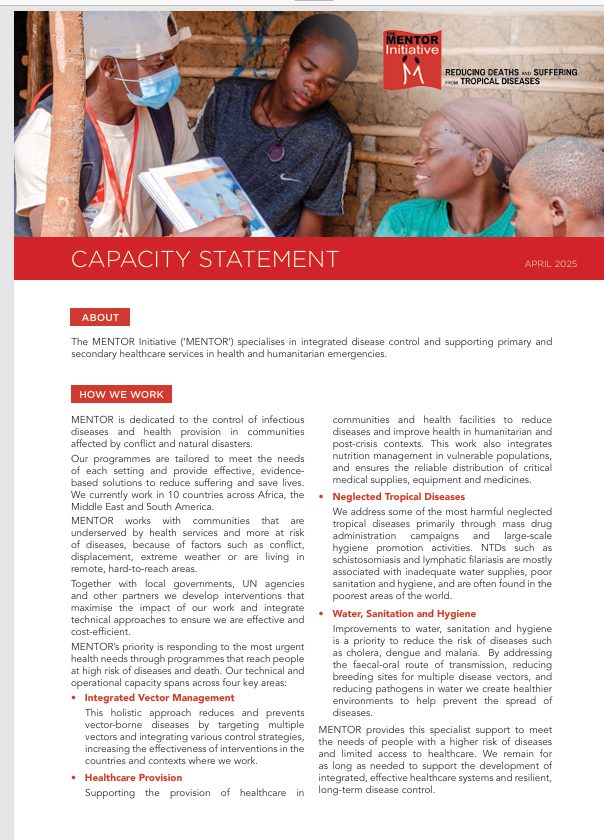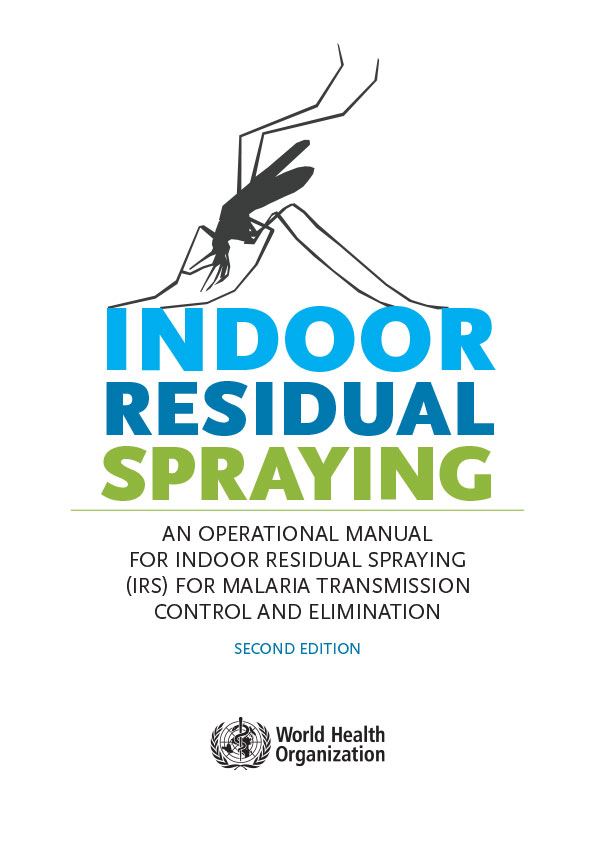Malaria control in emergencies (2025)

Field manual Humanitarian emergencies are increasing globally with alarming frequency and duration. These crises often cause health system collapse, leaving vulnerable populations without access to essential medical services. In endemic areas, malaria becomes a deadly threat, especially for displaced communities with little prior exposure and no immunity. Without swift action, outbreaks can escalate rapidly, making […]
Capacity Statement

The MENTOR Initiative capacity statement, updated in April 2025.
Water and sanitation interventions to prevent and control mosquito-borne diseases: focus on emergencies
WHO and UNICEF Technical note
Indoor Residual Spraying

AN OPERATIONAL MANUAL FOR INDOOR RESIDUAL SPRAYING (IRS) FOR MALARIA TRANSMISSION CONTROL AND ELIMINATION SECOND EDITION
Malaria Control in Emergencies

Complex emergencies are characterized by insecurity and mass population movements. At the end of the year 2000, an estimated 135 million people – including refugees, returnees and internally displaced persons – were af- fected by complex emergencies.1 More than 40 million people in Africa – more than 75% of them women and children – were displaced […]
